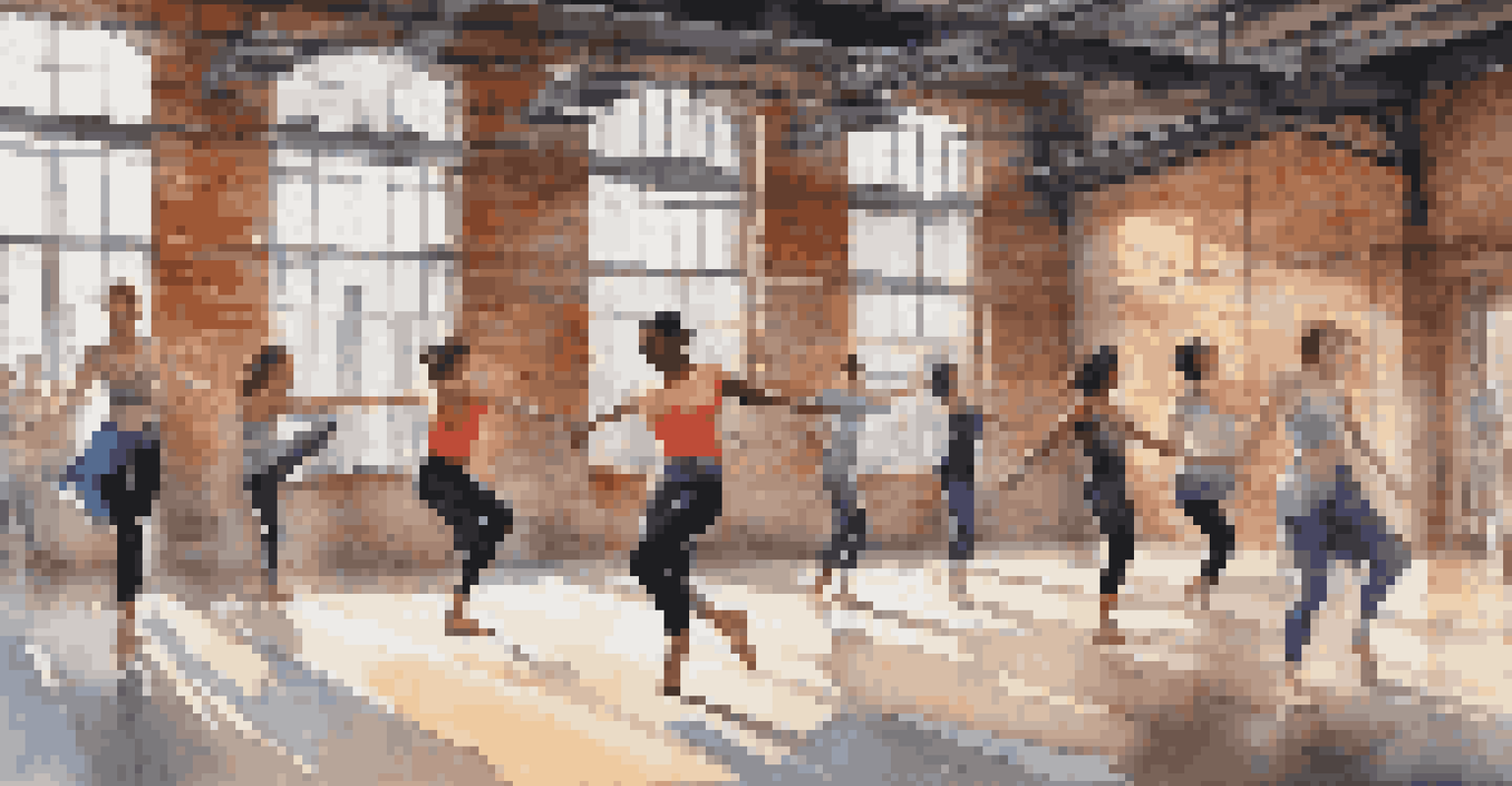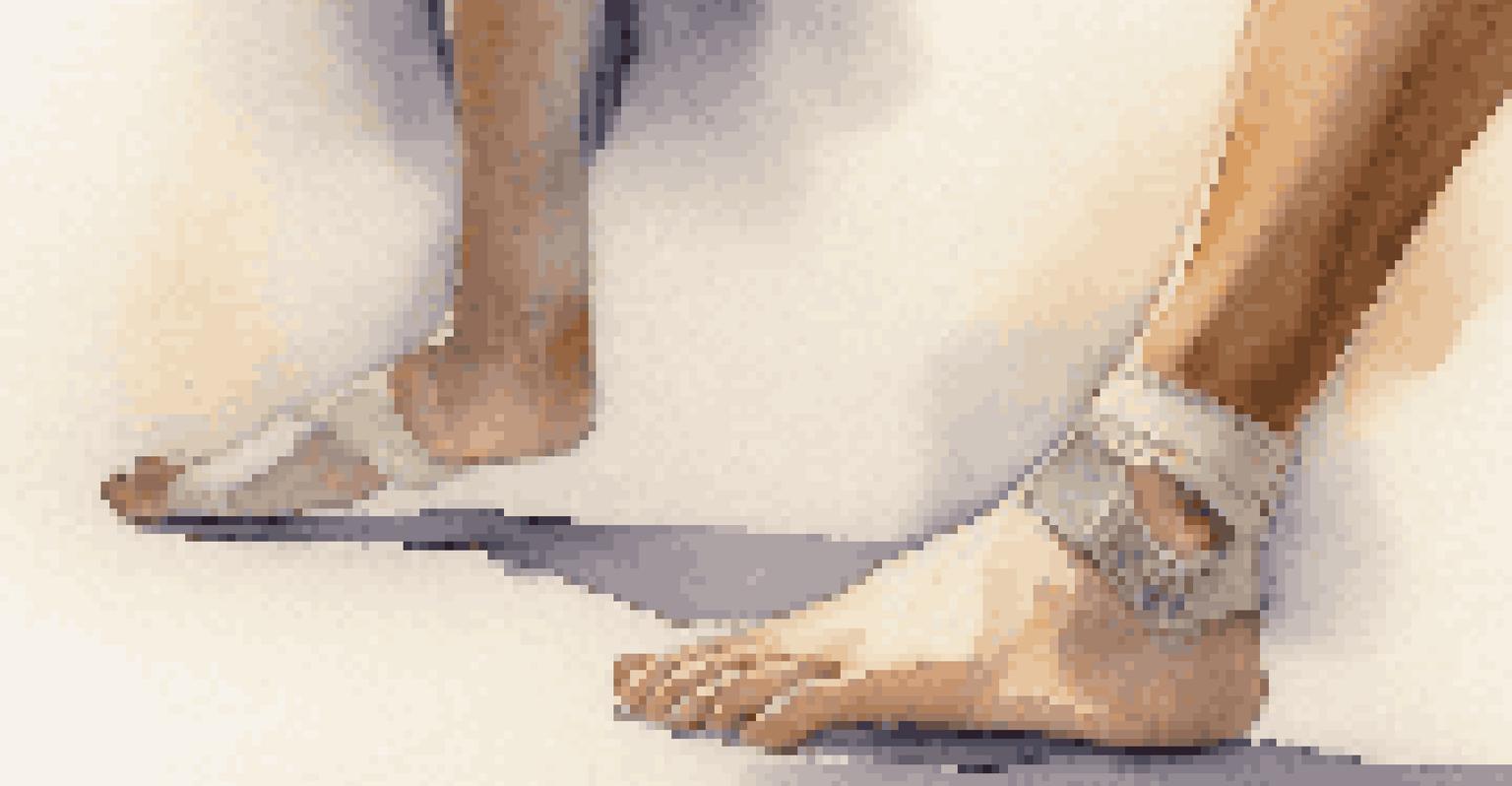Using Motion Sensors to Analyze Dance Movements and Techniques

Understanding Motion Sensors in Dance Analysis
Motion sensors are devices that detect movement and translate it into data. In the context of dance, these sensors can capture intricate movements and techniques, allowing for a deeper understanding of a dancer's performance. They typically use technology like accelerometers and gyroscopes to track various parameters, such as speed, angle, and rhythm.
Technology is best when it brings people together.
By gathering this data, dancers and instructors can pinpoint strengths and weaknesses in their performances. This insight is invaluable, as it enables personalized coaching and targeted practice strategies. Imagine being able to see exactly how your body moves and identify areas for improvement—motion sensors make this possible.
Moreover, these sensors can be integrated into wearable technology, making it easier for dancers to receive real-time feedback. This fusion of technology and art creates a more dynamic training environment, enhancing both performance and learning.
The Role of Data Analytics in Dance Training
Data analytics plays a crucial role in interpreting the information gathered from motion sensors. By analyzing the collected data, trainers can generate reports that highlight trends and patterns in a dancer's movements over time. This analysis allows for a more scientific approach to dance training, moving beyond traditional methods.

For example, a dancer may notice that they consistently overextend their leg during a leap. With motion sensor data, the trainer can provide visual representations of this movement, making it easier for the dancer to understand and correct their technique. This data-driven approach not only enhances performance but also reduces the risk of injury.
Motion Sensors Enhance Dance Training
Motion sensors provide valuable data that helps dancers and instructors identify strengths, weaknesses, and improve techniques.
Additionally, analytics can help track progress and set measurable goals. Dancers can visualize their improvements, which serves as motivation and reinforces their commitment to their craft.
Enhancing Performance Through Feedback Loops
Feedback loops are essential in any training regimen, and motion sensors provide immediate feedback to dancers. As dancers practice, the sensors capture their movements and relay information almost instantaneously. This real-time feedback allows dancers to make adjustments on the spot, enhancing their learning experience.
The art of dance is a revelation in motion, where technology can enhance rather than hinder the creative process.
Imagine practicing a complex routine and receiving instant tips on your posture or timing. This immediate correction helps to solidify learning and embed good habits. The ability to make quick adjustments can significantly improve a dancer's performance during rehearsals and live performances alike.
Furthermore, these feedback loops foster a growth mindset, encouraging dancers to embrace challenges and view mistakes as opportunities for learning. The supportive environment created by this technology can lead to more confident and expressive performances.
Incorporating Motion Sensors into Dance Education
Dance education is evolving, and incorporating motion sensors into curricula is a game-changer. Schools and studios that utilize this technology can offer students a more comprehensive understanding of their craft. By blending traditional techniques with modern technology, educators can prepare dancers for the demands of today's performance landscape.
Students can benefit from more personalized instruction, tailored to their specific needs and learning styles. For instance, a shy student may find it easier to express themselves when they see their movements digitally represented, leading to increased confidence and creativity.
Data Analytics Drives Performance
By analyzing motion sensor data, trainers can create personalized coaching strategies and track a dancer's progress over time.
Moreover, integrating motion sensors into education encourages collaboration between dancers and technologists. This interdisciplinary approach not only enriches the learning experience but also prepares students for future opportunities in the evolving field of dance.
Case Studies: Success Stories in Dance Analysis
Several dance companies and schools have successfully implemented motion sensor technology to enhance their training programs. For example, a renowned ballet company used motion sensors to analyze the performance of their principal dancers. The data collected led to significant improvements in their technique and overall stage presence.
In another instance, a contemporary dance studio integrated motion sensors into their choreography process. Dancers used the data to refine their movements, resulting in a more cohesive and fluid performance. This real-world application demonstrates the potential of technology to elevate artistic expression.
These success stories highlight that when motion sensors are combined with traditional dance training, the results can be transformative. Dancers not only improve their skills but also gain a deeper appreciation for their art.
Challenges and Limitations of Motion Sensor Technology
While motion sensors offer numerous benefits, they are not without challenges. One significant limitation is the cost associated with high-quality motion sensor systems. For smaller studios or individual dancers, this can be a barrier to entry, making it difficult to access the technology.
Additionally, there is a learning curve involved in interpreting and effectively utilizing the data collected. Not all dance instructors may be familiar with the technology, which can hinder its implementation. Training educators to understand and use motion sensor data effectively is crucial for maximizing its potential.
Future of Dance is Tech-Driven
As technology advances, motion sensors will increasingly integrate with education, offering immersive experiences that transform dance training.
Finally, reliance on technology can sometimes detract from the artistry of dance. It's essential to strike a balance between data analysis and creative expression, ensuring that the human element of dance remains at the forefront.
The Future of Dance with Motion Sensor Integration
The future of dance is undoubtedly intertwined with technology, and motion sensors will continue to play a pivotal role. As technology advances, we can expect even more sophisticated sensors that offer greater accuracy and insights into dance movements. This evolution will further enhance training and performance.
Moreover, the integration of motion sensors with virtual and augmented reality could revolutionize dance education. Imagine a scenario where dancers can practice alongside holographic instructors or receive real-time feedback in a virtual environment. This immersive experience could redefine the way we think about dance training.

Ultimately, as motion sensor technology becomes more accessible and user-friendly, its adoption in dance will likely increase. This shift will empower dancers and educators to embrace new methods of learning and expression, paving the way for a vibrant future in the world of dance.